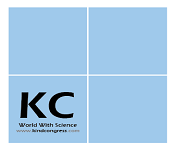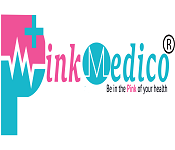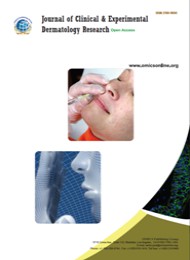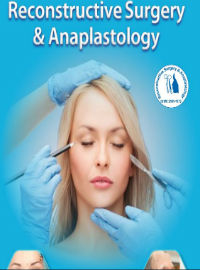Theme: Best Practices and Recent Advancements in Aesthetic & Cosmetic Dermatology
Aesthetic Meeting 2019
Aesthetic Meeting 2019
Aesthetic Meeting 2019 welcomes all the attendees, speakers, sponsor’s and other research expertise from all over the world to the "21st World Dermatology and Aesthetic Congress" which is going to be held during April 22-23, 2019 in Kuala Lumpur, Malaysia. We are very much honoured to invite you all to exchange and share your views and experience on the "Best Practices and Recent Advancements in Aesthetic & Cosmetic Dermatology“
Aesthetic Meeting 2019 will bring together world-class personalities working on Psoriasis, Cosmetic Dermatology, Surgical Dermatology, Eczema, Melanoma, Vitiligo, Acne, Bariatric surgery and other Dermatological diseases.
ME Conferences organizes 1000+ Global Events Every Year across USA, Europe & Asia with support from 1000 more scientific societies and Publishes 700+ Open access journals which contains over 100000 eminent personalities, reputed scientists as editorial board and organizing committee members.
Why to attend??
With members from around the world focused on learning about Dermatology and its advances; this is your best opportunity to reach the largest assemblage of participants from the Dermatology community. Conduct presentations, distribute information, meet with current and potential scientists, make a splash with new drug developments, and receive name recognition at this 2-day event. World-renowned speakers, the most recent techniques, developments, and the newest updates in Dermatology are hallmarks of this conference.
Target Audience:


Aesthetic Meeting 2019 provides a platform for researchers/scientists to share and globalize their research work while the participants from industry can promote their products thus felicitating dissemination of knowledge. We anticipate more than 300 participants around the globe with thought provoking keynote lectures, oral and poster presentations. The attending delegates include Editorial Board Members of related journals. The scope of Aesthetic Meeting 2019 is to bring the advancements in the field of Dermatology and Aesthetic related to Dermatology, Skin and Cosmetology with the theme of “Best Practices and Recent Advancements in Aesthetic & Cosmetic Dermatology”
Track 1: Leprosy
Leprosy which is also known as Hansen’s disease is a long-term infection by the bacteria. At the beginning stage infections occur without any symptoms and these typically remain for 5 to 20 years. Leprosy is a contagious disease which spreads between people through a cough or contact with fluid from the nose of an infected person. Leprosy could be detected by acid-fast bacilli in a skin biopsy or by detecting the DNA which is curable with a treatment known as multidrug therapy. Although the number of new leprosy cases occurring each year is important as a measure of transmission, it is difficult to measure due to leprosy's long incubation period, delays in diagnosis after once the disease is attacked, and the lack of laboratory tools to detect it in the very early stages. Multidrug therapy (MDT) remains highly effective and people could not be infected after the first monthly dose.
Track 2: Pediatric Dermatology
Pediatric dermatologists diagnose a wide variety of skin disorders including birthmarks skin infections, dermatitis. Pediatric Dermatology is a subspecialty of dermatology that provides specialization in the diagnosis and treatment of skin conditions in babies, children and adolescents. The impact of abnormal skin irritations and conditions can result in feelings of emotional inadequacy in children. Atopic Eczema, also called Dermatitis, is a skin condition that is usually found in small children. Atopic Dermatitis can include a variety of skin conditions with symptoms including red, itchy, oozing and scaling skin. Atopic Eczema in babies also called Infantile Dermatitis is usually found on the face and scalp and causes the skin to itch and ooze.
Track 3: Clinical Dermatology
Specialty of medicinal science that encompasses the complete range of diseases and conditions of the skin, hair and nails. Skin protects the body fights against infection maintains shelter for blood vessels and sweat glands that regulate temperature shields from damaging ultraviolet radiation and harmful environmental chemicals and toxins and also alerts the brain to sensitive touch smells and impending pain. It also reflects many emotions such as growing pale and blushing. Healthy hair is considered to be one of our most important and a desired feature which is comprised of keratin a lifeless substance which protects skin, warms the body, and brows/lashes keep dirt and particles from injuring the eyes. Nails are also comprised of keratin. Several nail funguses and infections can be caused by inadequate hand washing, unsanitary manicures and pedicures, improper nail trimming and even tight shoes. Diseases such as diabetes and treatments for cancer can harm the nails.
Track 4: Skin Pigmentation
Hyperpigmentation is caused due to increased melanin which darkens of an area of skin or nails. It is caused by sun damage including those related to acne vulgaris. People with darker skin tones are more prone to hyperpigmentation especially with excess sun exposure. Treatment of hyperpigmentation caused by melanin overproduction includes the use of topical depigmenting agents. Hyperpigmentation can sometimes be induced by dermatological laser procedures. Another form of hyperpigmentation is post inflammatory hyperpigmentation which are dark and discolored spots that appear on the skin.
Track 5: Alopecia & Trichology
Hair loss, also known as alopecia or baldness which refers to loss of hair from part of the head or body which causes psychological distress in some people. A key aspect of hair loss with age is the aging of the hair follicle. Baldness is the partial or complete lack of hair growth which is a major topic of hair thinning. Trichology is the branch of dermatology that deals with study of the health of hair and scalp. The main cause of hair loss is a due to genetics, male hormones and autoimmune which differs from male and female patterns.
Track 6: Keloid and Pityriasis rosea
Keloid is the formation of a type of scar depending on its maturity which is also known as keloid disorder and keloidal scar. It is a result of an overgrowth of granulation collagen tissue at the site of a healed skin injury which is then slowly replaced. Keloids are firm rubbery lesions and can vary from pink to the color of the person's skin or red to dark brown in color. A keloid scar is benign and not contagious but sometimes accompanied by severe itchiness pain and changes in texture. Pityriasis rosea is a type of skin rash and the cause of pityriasis rosea is not certain, but its clinical presentation and immunologic reactions suggest a viral infection as just a cause. It typically remains less than three months and disappears without any treatment. Sometimes fever may occur before the start of the rash or itchiness may be present at the beginning stage of Pityriasis rosea but does not appear to be contagious. Moderate itching due to skin over-dryness is much more common, especially if soap is used to cleanse the affected areas.
Track 7: Sunburn
Sunburn is a form of radiation burn that results from an overexposure to ultraviolet (UV) radiation, commonly from the sun. Exposure of the skin to lesser amounts of UV radiation will often produce a suntan. Excessive UV radiation is the leading cause of primarily non-malignant skin tumors. Sunscreen is widely agreed to prevent sunburn and some types of skin cancer. The most effective way to prevent sunburn is to reduce the amount of UV radiation reaching the skin. Many commercial products are available that block UV light, known as sunscreens or sunblock’s. They have a sun protection factor (SPF) rating, based on the sunblock's ability to suppress sunburn.
Track 8: Psoriasis
Psoriasis is a long-lasting autoimmune disease characterized by patches of abnormal skin which are typically red, itchy, and scaly. There are five main types of psoriasis: plaque, guttate, inverse, pustular, and erythrodermic, whereas plaque psoriasis, also known as psoriasis vulgaris. Psoriasis is generally thought to be a genetic disease that is mainly caused by environmental factors. Plaque psoriasis typically appears as raised areas of inflamed skin covered with silvery-white scaly skin. These areas are called plaques and are most commonly found on the elbows, knees, scalp, and back. Psoriasis is characterized by an abnormally excessive and rapid growth of the epidermal layer of the skin. Abnormal production of skin cells and an overabundance of skin cells result from the sequence of pathological events in psoriasis. Psoriasis is generally thought to be a genetic disease that is triggered by environmental factors. There is no cure for psoriasis however various treatments can help control the symptoms. These treatments include steroid creams, vitamin D3 cream, ultraviolet light and immune system suppressing medications, such as methotrexate.
Track 9: Vitligo
Vitiligo is a long term skin condition characterized by patches of the skin losing their pigment. The patches of skin affected become white and usually have sharp margins in which hair from the skin of mouth and nose may also become white. Most often the patches begin on areas of skin that are exposed to the sun and are more noticeable in people with dark skin. Vitiligo may result in psychological stress. There is no known cure for vitiligo and for those with light skin sunscreen and makeup are typically recommended. Other treatment options may include steroid creams or phototherapy to darken the light patches.
Track 10: Skin Cancer
Skin cancers arise from the skin which is due to the development of abnormal cells that have the ability to invade or spread to other parts of the body. Ultraviolet radiation causes sunburns and increases the risk of three types of skin cancer: melanoma, basal-cell carcinoma and squamous-cell carcinoma. Nonmelanoma skin cancer may appear as a firm red nodule, a scaly growth that bleeds or develops a crust. It most often occurs on the nose, forehead, ears, lower lip, hands, and other sun-exposed areas of the body. Skin cancer affects people of all skin tones including those with darker complexions. When melanoma occurs in people with dark skin tones, it's more likely to occur in areas not normally exposed to the sun, such as the palms of the hands and soles of the feet.
Track 11: Skin Infection and Therapeutics
Infection of the skin is distinguished from dermatitis which is inflammation of the skin, but a skin infection can result in skin inflammation. Skin inflammation due to skin infection is called infective dermatitis. The symptoms of a skin infection also vary depending on the type. Common symptoms include redness of the skin and a rash. Other symptoms are also such as itching, pain, and tenderness. Skin infection occurs when bacteria enter the body through a break in the skin such as a cut or a scratch. Tiny insects or organisms burrowing underneath your skin and laying eggs can cause a parasitic skin infection.
Track 12: Neoplasm
Neoplasm is an abnormal growth of tissue which it forms a mass and is commonly referred to as a tumor. Prior to the abnormal growth of tissue as neoplasia, cells often undergo an abnormal pattern of growth such as metaplasia or dysplasia. A neoplasm can be caused by an abnormal proliferation of tissues which can be caused by genetic mutations. Neoplastic tumors are often heterogeneous and contain more than one type of cell, but their initiation and continued growth is usually dependent on a single population of neoplastic cells.
Track 13: Cutaneous Conditions
Any medical condition that affects the organ system that encloses the body and includes skin, hair, nails, and related muscle and glands. The major function of this system acts as a barrier against the external environment. The two main types of human skin are: glabrous skin, the hairless skin on the palms and soles the other is hair-bearing skin. Within the latter type, the hairs occur in structures called pilosebaceous units each with hair follicle, sebaceous gland, and associated arrector pili muscle. The epidermis is the most superficial layer of skin a squamous epithelium with several strata. The dermis is the layer of skin between the epidermis and subcutaneous tissue, and comprises two sections the papillary dermis and the reticular dermis. The subcutaneous tissue is a layer of fat between the dermis and underlying fascia.
Track 14: New Trends by Aesthetic Therapies
The exciting field of Aesthetic Medicine is a new trend in modern medicine. The real benefit of practicing Aesthetic therapy is a type of care that practitioners are offering to their customers. Aesthetic medicine is an inclusive term for specialties that focus on improving cosmetic appearance through the treatment of conditions including scars, skin laxity, wrinkles, moles, liver spots, excess fat, cellulite, unwanted hair, skin discoloration, and spider veins. Aesthetic medicine includes both surgical procedures and non-surgical procedures and practitioners may utilize a combination of both.
Track 15: Allergy and Immunology
Allergy also known as allergic diseases are a number of conditions caused by hypersensitivity of the immune system. These diseases include hay fever, food allergies, atopic dermatitis, allergic asthma, and anaphylaxis. Substances that come into contact with the skin, such as latex, are also common causes of allergic reactions known as contact dermatitis or eczema. Immunology has applications in numerous disciplines of medicine as in determatology even whereas Immunodermatology studies skin as an organ of immunity in health and disease. Several areas have special attention such as photo-immunology inflammatory diseases such as Hidradenitis suppurativa allergic contact dermatitis and atopic eczema presumably autoimmune skin diseases such as vitiligoand psoriasis, and finally the immunology of microbial skin diseases such as retrovirus infections and leprosy.
Track 16: Plastic & Cosmetic Laser Surgery
Plastic surgery is a surgical specialty involving the restoration, reconstruction, or alteration of the human body. It is of two type’s reconstructive surgery which includes craniofacial surgery, hand surgery, microsurgery, and the treatment of burns and the other is cosmetic or aesthetic surgery which aims at improving the appearance of it. Aesthetic or Cosmetic surgery is an essential component of plastic surgery and includes facial and body aesthetic surgery. Plastic surgeons use cosmetic surgical principles in all reconstructive surgical procedures as well as isolated operations to improve overall appearance of humans. A range of lasers are used to treat various skin conditions including scars, vascular and pigmented lesions, and for photorejuvenation. The laser surgery for dermatology often bypasses the skin surface this results in removal of unwanted tissue by laser surgery.
Track 17: Aesthetic or Cosmetic Dermatology
Dermatologists have been most prominent professionalism in the field of cosmetic surgery even. Cosmetology is the study and application of beauty treatment which include hairstyling, skin care, cosmetics, manicures/pedicures, non-permanent hair removal such as waxing and sugaring and permanent hair removal processes such as electrology and Intense Pulsed Light. A cosmetologist is a one who is an expert in the care of hair and makeup as well as skincare and beauty products. On the other hand they can offer other services such as coloring, extensions, perms and straightening. Cosmetologists help their clients improve on or acquire a certain look by applying advance trending aesthetic applications.
Track 18: Market & Case Reports in Dermatology and Aesthetic
As the science and technology are advancing daily the advantages of aesthetic therapy is one of the most valuable contributions that medical aestheticians can bring to a business is to lower costs per treatment. Skincare is a huge growth area in medical aesthetics. Aesthetic medicines and Cosmetic Surgery focus on reshaping cosmetic appearance through the treatment of conditions like skin laxity, scars, moles, skin discoloration, excess fat, unwanted hairs and spider veins. These aesthetic medicine and cosmetic surgery procedures are very elective and are implemented on patients who do not suffer from any sickness. International Society of Aesthetic Plastic Surgery (ISAPS) performed an international survey on cosmetics according to which, worldwide 9,645,395 surgical procedures and 10,591,506 non-surgical procedures were performed by 2017.
Track 19: Melanoma
Melanoma is a type of skin cancer which is also known as malignant melanoma. Melanomas typically occur in the skin but may rarely occur in the mouth, intestines or eye. The primary cause of melanoma is ultraviolet light (UV) exposure with low levels of skin pigment. Using sunscreen and avoiding UV light may prevent melanoma which is a most dangerous type of skin cancer. Treatment is typically removed by surgery which is more common in men than in women. Melanomas are usually caused with the damage of DNA when exposure to ultraviolet (UV) light from the sun where genetics also would be the play role.
Other Related Societies:
Middle-East:
Turkish Society of Dermatopathology; Emirates Dermatology Society; Jordanian Society of Dermatology and Venereology; Iranian Society of Dermatology; Israel Society of Dermatology and Venerology; Jordanian Society of Dermatology and Venereology; Kuwait Society of Dermatologists; Oman Dermatology Society; Saudi Society of Dermatology and Dermatologic Surgery
Asia-Pacific:
Asian Society for Pigment Cell Research; Australasian Dermatopathology Society; Cosmetic Dermatology Society of India; New Zealand Dermatological Society; Japanese Society of Anti-Aging Medicine; Asian Dermatological Association Ltd; Korean Dermatological Association; Japanese Dermatological Association; Asian Academy of Dermatology and Venereology; Hong Kong Society of Dermatology and Venereology
USA:
American Society for Dermatologic Surgery; Brazilian society of Dermatology; American Society for Laser Medicine and Surgery; Pan American Society for Pigment Cell Research; Latin American Pediatric Dermatologic Society; Florida Society of Dermatology and Dermatologic Surgery; American Medical Association; American Academy of Dermatology Association; American Dermatological Association; American Board of Dermatology; Canadian Association of Wound Care
Europe:
Austrian Society of Dermatology and Venereology; European Nail Society; Danish Dermatological Society; German Dermatological Society; Italian Society of Surgical oncology and Oncological Dermatology; Italian Society of Dermatology; French Society of Dermatology; French Society of Dermatological Research; European association of Dermato-oncology; Spanish Academy of Dermatology and Venereology
Summary of World Dermatology and Aesthetic Congress:
Annually Skin Diseases and Infections continue to strike and increase in magnitude, complexity, frequency and economic impact. At the same time, awareness of the process and potential benefits of disaster reduction is still confined to specialized circles, and has not yet been adequately communicated to policy makers and the general public. Dermatology and Aesthetic is playing an important role to create awareness among people and providing a platform to share and discuss on different types of Skin infections, Plastic Surgery and Cosmetic laser treatments with new Aesthetic Devices in the market. As blemishes and wrinkles are very common skin problems and there are thousands of conditions that can affect the skin and also some cause mild symptoms. As Acne is the most commonly diagnosed skin condition, although many people use over-the-counter treatments and home remedies it is time to share ones views and knowledge and we are organizing the series of 21st World Dermatology and Aesthetic Congress.

Scope and Importance:
Aesthetic Meeting 2019 will provide a forum dealing with the skin, nails, hair and its diseases. Aesthetic Dermatology is mainly meant to improve person’s appearance by reducing or eliminating imperfections. This conference will bring expertises together from international wide to enable the sharing of knowledge, symposiums and strengthen technical sessions. The subject specific target audience of the conference is: Nobel-Lorett, Scientist, Professors, Hod, practices, Clinics, Delegate participations.
21st World Dermatology and Aesthetic Congress is an international, multidisciplinary forum for the publication of original contributions and the exchange of knowledge and experience on the Skin Diseases, Infections and Cosmetology Surgeries. The study and research on Dermatology and Aesthetic is dedicated to conduct studies that advance academic disciplines and contribute to applied knowledge. The scope of the meeting is to bring Surgeons, Epidemiologist, Nurses, Skin specialist, Researchers, Physicians across the globe to share knowledge on the recent diseases which are emerging into the world and the way of treating them with new modern innovative plastic or laser surgeries with a theme of “Best Practices and Recent Advancements in Aesthetic & Cosmetic Dermatology"
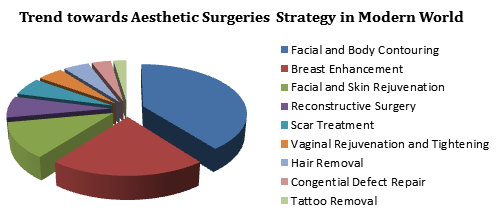
Why in Kuala Lumpur, Malaysia:
Dermatology is a common treatment in aesthetics that treats skin-related diseases and conditions. Over the past few years Dermatology in Malaysia has become well known as more and more people prefer to dermatologists for help with skin problems. Besides skin problems, people also undergo dermatology to help them smoothen out unsatisfactory parts of their complexion in order to improve their overall appearance. These treatment methods include laser and light treatments with prescription and dedicated medicine.
Hence Malaysia is a place where Consultant Physician will customize and prescribe specific treatments to patients once after detailed diagnosis and consultation is done. Here at Malaysia, dermatology treatments are highly recommended for those with severe and complicated acne conditions, skin infections, pigmentation as well as Dermatitis / Eczema

Dermatology and Aesthetic Research Centers in Malaysia:
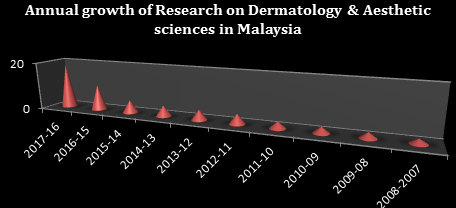
Top Dermatology & Aesthetic Hospitals of Malaysia:
Conference Highlights
- Leprosy
- Pediatric Dermatology
- Clinical Dermatology
- Skin Pigmentation
- Alopecia & Trichology
- Keloid and Pityriasis rosea
- Sunburn
- Psoriasis
- Vitligo
- Skin Cancer
- Skin Infection and Therapeutics
- Neoplasm
- Cutaneous Conditions
- New Trends by Aesthetic Therapies
- Allergy and Immunology
- Plastic & Cosmetic Laser Surgery
- Aesthetic or Cosmetic Dermatology
- Market & Case Reports in Dermatology and Aesthetic
- Melanoma
To share your views and research, please click here to register for the Conference.
To Collaborate Scientific Professionals around the World
| Conference Date | April 22-23, 2019 | ||
| Sponsors & Exhibitors |
|
||
| Speaker Opportunity Closed | Day 1 | Day 2 | |
| Poster Opportunity Closed | Click Here to View | ||
Useful Links
Special Issues
All accepted abstracts will be published in respective Our International Journals.
- Journal of Clinical & Experimental Dermatology Research
- Clinical Dermatology Research Journal
- Dermatology Case Reports
Abstracts will be provided with Digital Object Identifier by













